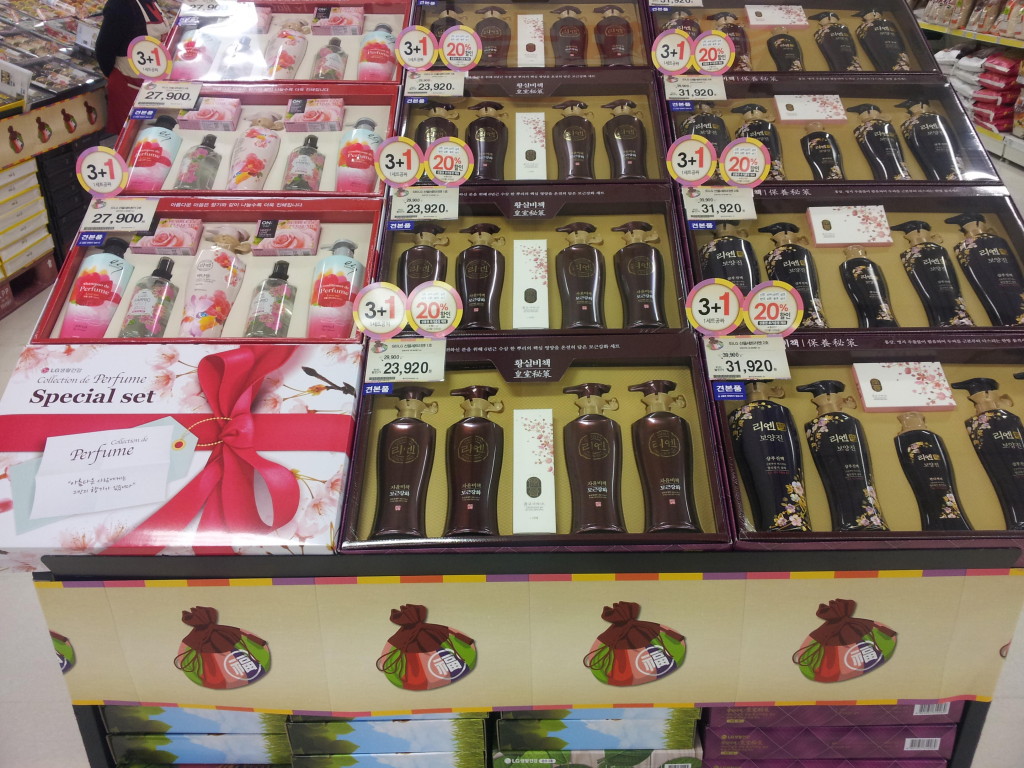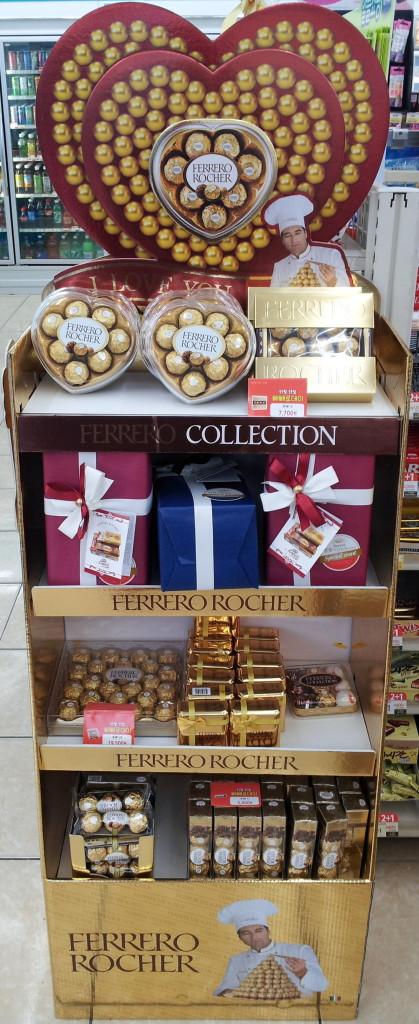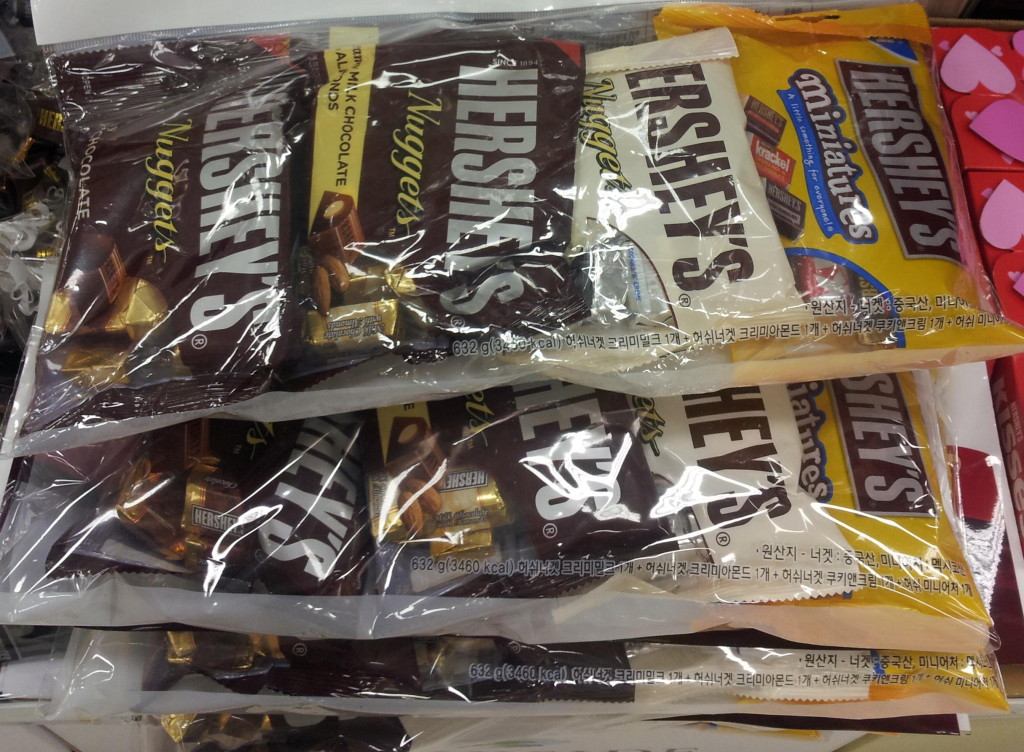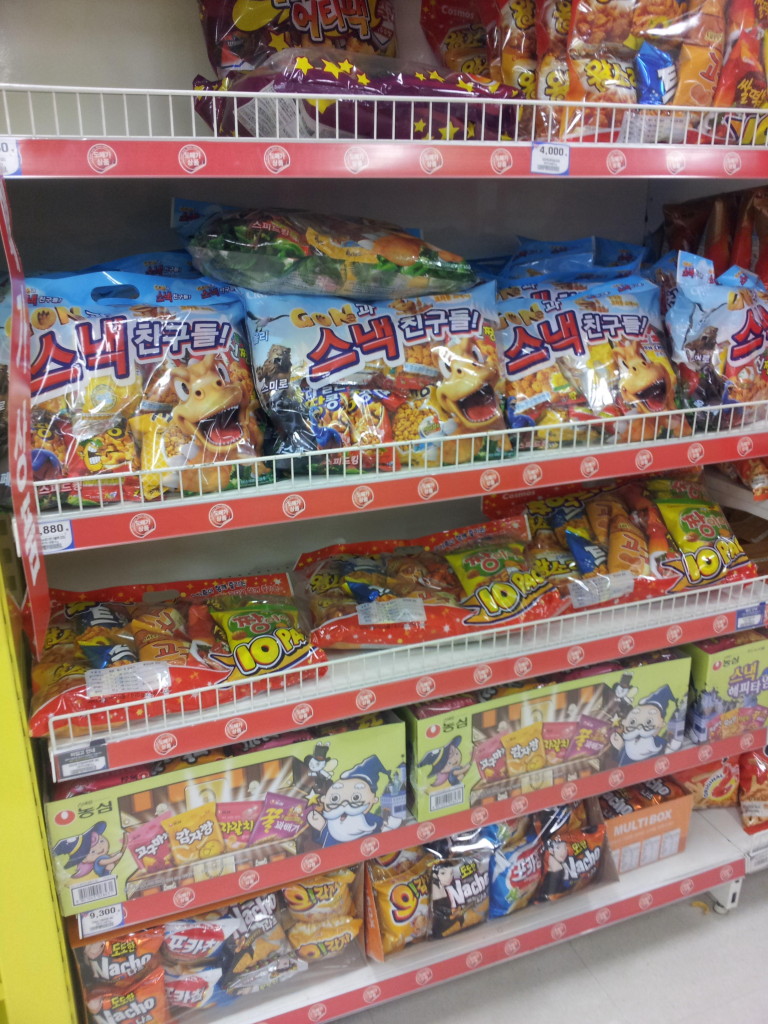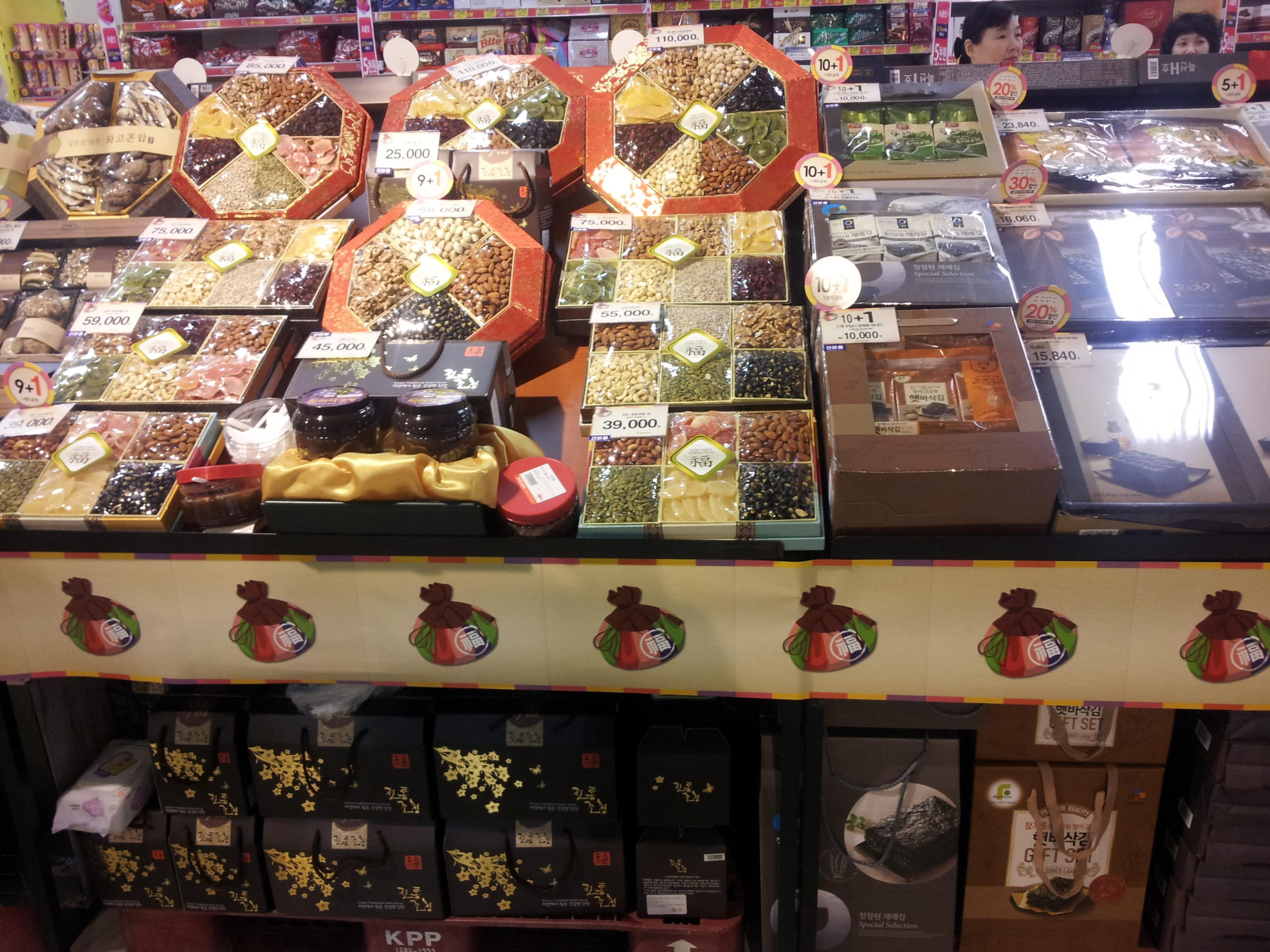
Happy New Year! Have some plastic
The month of February sees the supermarkets and convenience stores in Korea filled with pre-packaged gifts.
Of course there are all the heart-shaped chocolates boxes and extra red, pink, and white cellophane for Valentines’ Day gifts, but there are also the somewhat strange gift boxes of more “every day” items: canned tuna and olive oil, shampoo and soap, instant coffee sets. There are also more traditional items, such as seaweed lava, dried mushrooms, and dried fruit and nuts. These gift sets are not for your sweetheart, but for relatives and business colleagues for Seollal, otherwise known as lunar New Year.
Now while some may focus on the interesting items that Koreans give each other as gifts, what I usually notice at this time of year is the excessive packaging.
It is something I am always vaguely aware of. Year-round you see the individually wrapped cookies in a box of 6 cookies, or 5 small bags of snacks in one big bag. However, when you are confronted with rows and rows of gift set displays, and you see the individual tins in a laminated box, in a PVC-coated wrap, and a another laminated cardboard gift bag waiting to put the gift-set in to… well the excessive packaging is just far more obvious.
It appears that Korean government is aware of this excess and has taken measures to curb it, presumably to keep in line with international standards. As far back as 1999 it enforced a law that reduced the ratio of packing to the good it enclosed, and limited the number of layers on packaging to 2. However, in the example of the cookies, this still allows for an awful lot of waste. There may only be two “layers” – one around the cookie, and one in the form of the box – but that still makes for a great deal of overall packaging material.
There may be an argument for freshness: the individually wrapped cookies stay fresher longer and do not all need to be consumed at once on opening. But when there are only 6 cookies, are there really going to be any left?
There is also an idea of “bigger is better”. Last year a professor at Yonsei university did an experiment among his students, and found that if two boxes of snacks were the same price, most of them would automatically buy the bigger box, before even checking if the content were different.
The discount culture in Korea also leads to more packaging: “2 for the price of 1” sets are often packaged together in an extra thick plastic bag, rather than just allowing the customer to read the discount sign and pick up 2 individual packs themselves.
It seems to me that the underlying reason is simply one of “it just looks better”, and this is maybe a reflection of the Korean collective psyche that is best left to ponder another day.
Sources:
http://www.legco.gov.hk/yr12-13/english/sec/library/1213inc04-e.pdf
http://www.edie.net/news/0/Korea-enacts–excessive-packaging–law/1013/
http://www.koreabang.com/2014/stories/korean-consumers-fooled-by-deceptively-packaged-snacks.html

